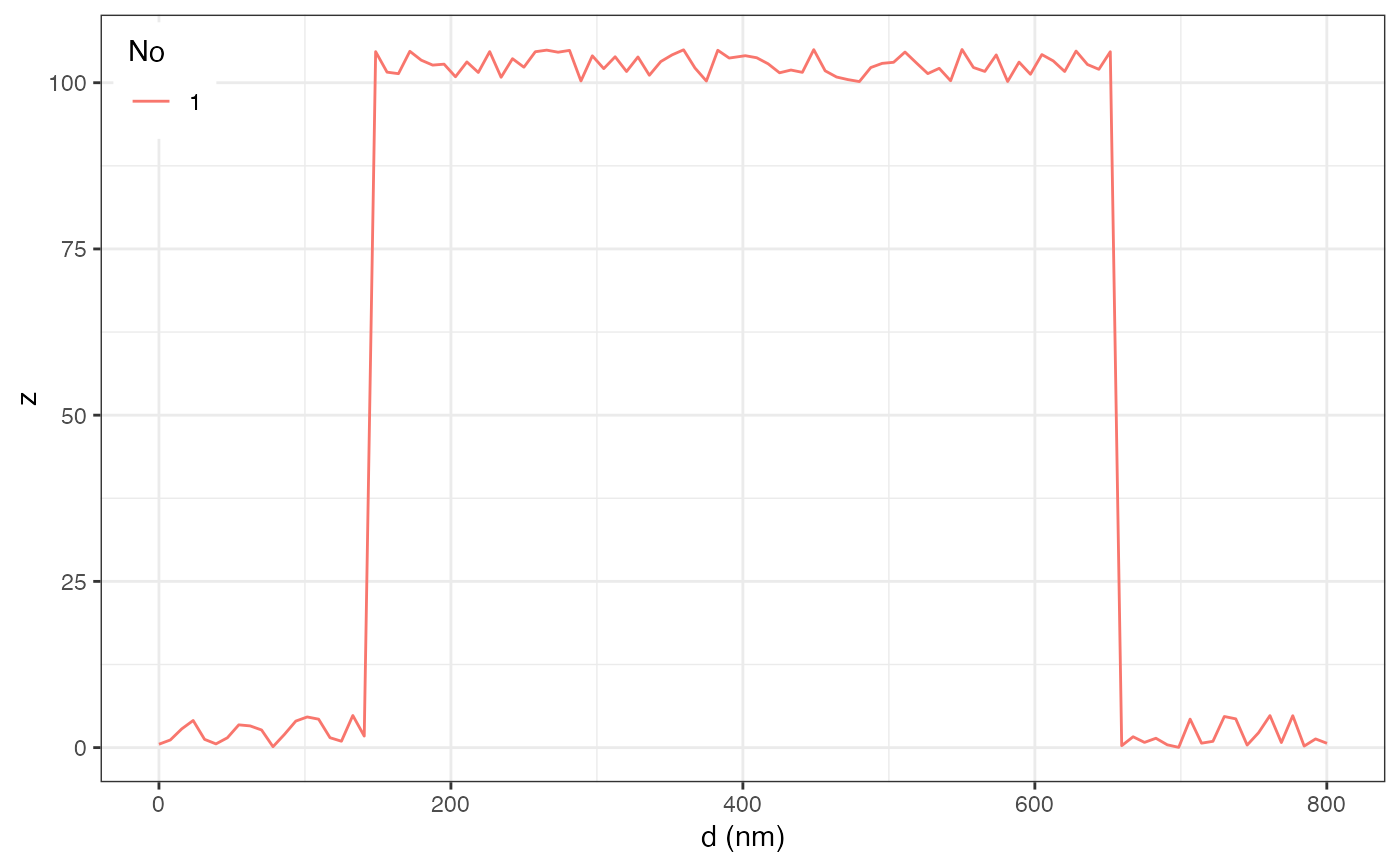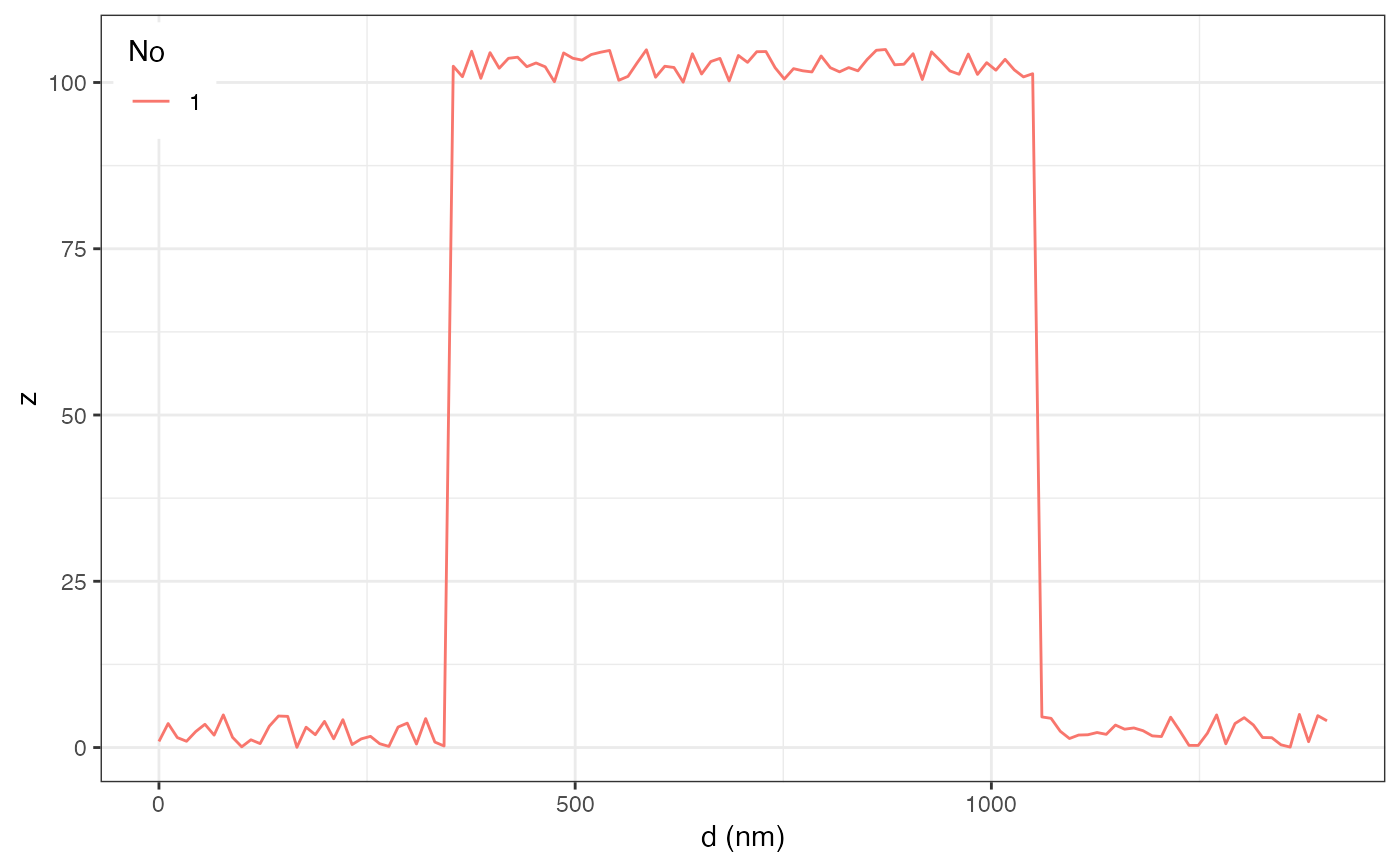create a profile data line across an image (d), providing
the starting point (x1,y1) and end point (x2,y2). The start and end
points are provided in units of nanometers or pixels. If the starting
and end point coordinates are not provided, it will use the raster::click()
function to prompt the user to click on two points on the graph.
Note: the convention is that the bottom left corner is (1,1) in pixels and (0,0) in nanometers
AFM.lineProfile(
obj,
x1 = NA,
y1 = NA,
x2 = NA,
y2 = NA,
N = 1,
unitPixels = FALSE,
verbose = FALSE
)Arguments
- obj
AFMdata object
- x1
start x position in units of nm/pixels from bottom left, if
NA, user will need to click on two points to define profile line- y1
start y position in units of nm/pixels from bottom left, if
NA, user will need to click on two points to define profile line- x2
end x position in units of nm/pixels from bottom left, if
NA, user will need to click on two points to define profile line- y2
end y position in units of nm/pixels from bottom left, if
NA, user will need to click on two points to define profile line- N
thickness of line in pixels, for high-resolution images, increase
- unitPixels
logical, if
TRUE, then coordinates are in units of pixels otherwise nm- verbose
logical, if
TRUE, output additional information
Value
AFMdata object with line data, use AFM.linePlot() to graph / tabulate data or plot(addLines=TRUE) to graph image with lines
See also
[AFM.getLine(), AFM.liniePlot(), plot.AFMdata()]
Examples
afmd = AFM.artificialImage(width=128, height=128, type='calibration', verbose=FALSE)
AFM.lineProfile(afmd, 100, 500, 900, 500) -> afmd2
AFM.linePlot(afmd2)
 AFM.lineProfile(afmd, 1, 1, 128, 128, unitPixels=TRUE) -> afmd2
AFM.linePlot(afmd2)
AFM.lineProfile(afmd, 1, 1, 128, 128, unitPixels=TRUE) -> afmd2
AFM.linePlot(afmd2)
 head(AFM.linePlot(afmd2, dataOnly=TRUE))
#> x z type
#> 1 0.00000 0.9193581 1
#> 2 11.04854 3.6079403 1
#> 3 22.09709 1.4946407 1
#> 4 33.14563 0.9417131 1
#> 5 44.19417 2.4014746 1
#> 6 55.24272 3.4955050 1
head(AFM.linePlot(afmd2, dataOnly=TRUE))
#> x z type
#> 1 0.00000 0.9193581 1
#> 2 11.04854 3.6079403 1
#> 3 22.09709 1.4946407 1
#> 4 33.14563 0.9417131 1
#> 5 44.19417 2.4014746 1
#> 6 55.24272 3.4955050 1